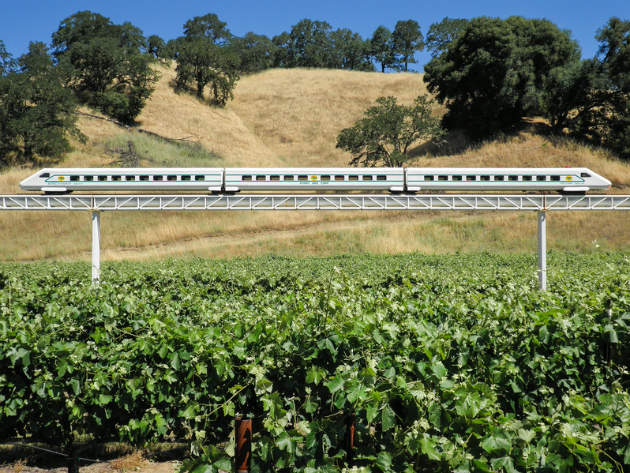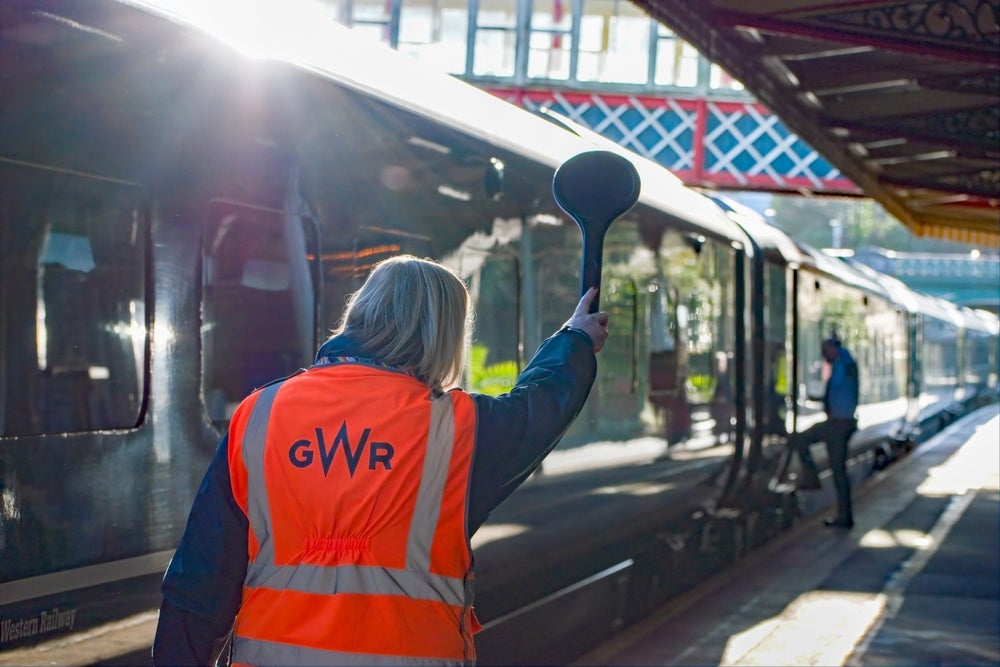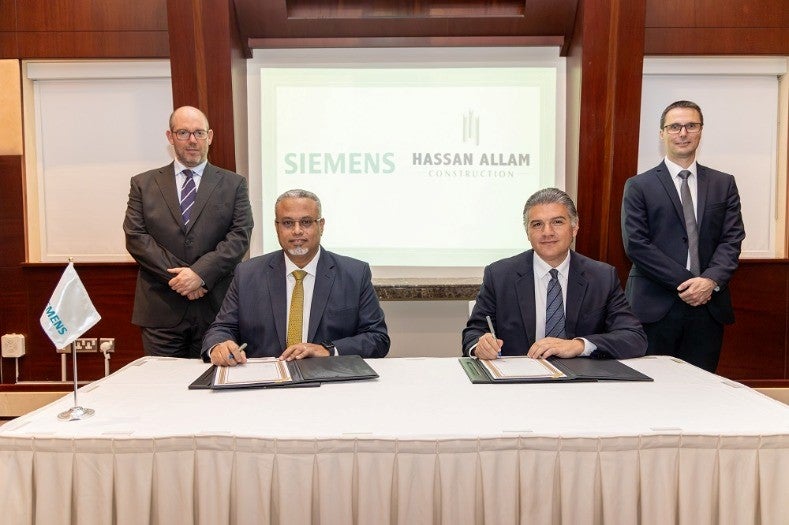
In Mendocino County, California, a two-man company hopes to bring to life a new model of high-speed train; one that promises to be greener, lighter, faster, safer and cheaper than any other competitive mechanism currently on the market.
Flight Rail Corporation was founded by award-winning engineer Max Schlienger P.E and founder of Retech. Together with his son, Eric Schlienger Ph.D, they developed Vectorr, an elevated high-speed rail system propelled by air pressure within a sealed power tube underneath the train.
The technology is projected to operate at speeds of over 200mph and climb grades as steep as 10%, more than three times steeper than a conventional train can climb.
A full working prototype, at 1:6 of the scale of a real system, can be seen today whizzing past at 30mph on a 638m closed loop in Schlienger’s back garden.
Vectorr’s origin and vision
Max Schlienger’s idea came from a rather unusual place: his long-standing expertise in vacuum metallurgical processing equipment.
“I observed how relatively small pressure differentials can generate powerful forces,” he says. “Having noticed the force that could be so generated, the question arose: ‘Could this be used as a motive force for transportation?’”
How well do you really know your competitors?
Access the most comprehensive Company Profiles on the market, powered by GlobalData. Save hours of research. Gain competitive edge.

Thank you!
Your download email will arrive shortly
Not ready to buy yet? Download a free sample
We are confident about the unique quality of our Company Profiles. However, we want you to make the most beneficial decision for your business, so we offer a free sample that you can download by submitting the below form
By GlobalDataThe system he developed in answer to that question was dubbed Vectorr as it is a combination between the mathematical term ‘vector’, meaning direction and magnitude, and Torr, a metric measurement of pressure. It has so far obtained five US patents covering the propulsion system and other aspects of the technology.
The principle involves a train propelled through vacuum and air pressure, via a free-moving piston contained underneath inside a sealed power tube. This piston is magnetically coupled to the passenger cars riding on the track above using high-strength, permanent magnets. It could support up to ten carriages, with anywhere between 240 and 800 passengers.
This idea may sound somewhat familiar but its creators warn that the system should not be confused with the ubiquitous Maglev technology, which ‘levitates’ the carriages whereas Vectorr uses magnetic pulling forces.
One of Vectorr’s key advantages is that it would be able to climb grades as steep as 10%, even in the presence of ice and snow – far steeper than any other rail systems currently in operation.
The designers believe that Flight Rail also boasts a number of eco-friendly benefits, from reduced environmental impact on installation (there’s no trenching or tunnelling required), to minimal CO2 emissions due to its electric power source and decreased noise, thanks to its light weight and aerodynamic shape.
“The system is intended to be placed along existing transportation corridors, thus leveraging the use of existing transportation routes,” Schlienger explains. “It was designed to facilitate transportation between major cities, or major cities and outlying towns. However the system also has intra-city applications as well.”
Is the world ready to embrace Flight Rail?
Despite its futuristic appeal, the concept is not entirely original. A similar experimental system was first debuted in London the 1840s, when it was known as the ‘Atmospheric Railway’, but due to mechanical limitations and meteorological difficulties, all efforts to prove the technology fell flat and the enterprise was abandoned.
“We were actually unaware of the earlier work for quite some time,” Schlienger says. “By the time we did discover those earlier efforts, we had already run into the primary problems of that earlier effort.”
The sort of technology used today by the Schlienger’s system was not possible until the second half of the 20th Century. Flight Rail uses advanced synthetic materials for the power tube, coupled with high-strength magnets developed by Delco Remy of General Motors.
The feasibility of the entire concept is demonstrated through a model test track, the team’s “greatest achievement to date”, which operates at speeds up to 30mph, equivalent to 180mph in real-scale.
One question that arises is whether the market is ready to embrace yet another rail innovation at a time when Elon Musk’s Hyperloop One has captured the fascination, and significant financial backing, of established rail investors.
Schlienger feels confident that his system poses unique advantages: “The primary selling point of Hyperloop One occurs over longer routes where the greater speed may be used to justify the much greater expense, [whereas] the Vectorr system is designed to be implemented along existing right-of-ways with minimum installation costs.”
The ‘green’ technology can also draw its power from locally available sources. This way, it could also skew any penalty for pollution mitigation, which normally accompanies big rail infrastructure projects.
At present, after 20 years of work, the effort to propel Flight Rail into commercialisation is still far from over. Max and Eric Schlienger are currently preparing to construct and demonstrate a switch and spur on the existing system, and are looking for a partner and a project to help turn their vision into reality, starting with a real-scale model.







